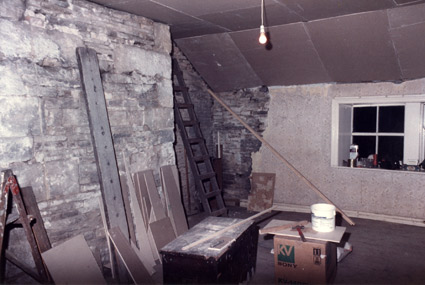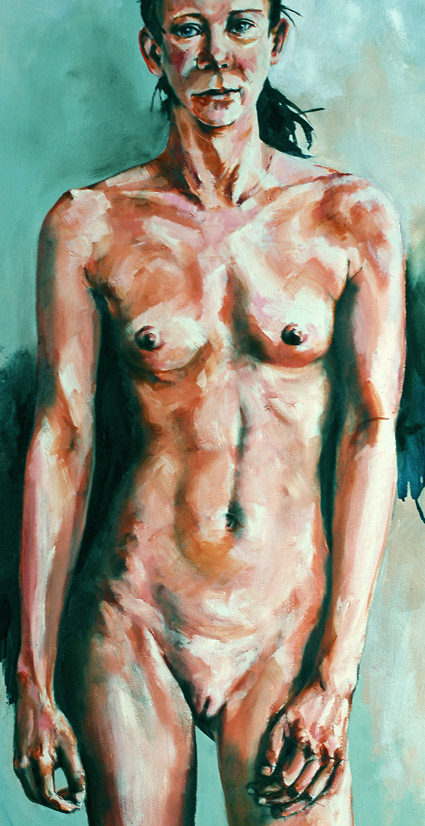ę Art and Illusion | Main | Become the paint Ľ
December 28, 2006
Plastering like Painting
Plastering - amazing business. There it is all smooth and peachy on the wall, but how does it get there? It starts off as a thin gloopy slippery sloppy liquid Ė you pour it out of the mixing bucket onto the spot board.

How the hell díyou get it onto a vertical wall? Let alone all smooth and peachy. Try it Ė itís impossible.
Several years ago, when I was working on my first house:

Big Eddie was doing some plastering for me. So I asked him how it was done and would he show me the dark mysteries of mastering The Dark Art of Sticky Gypsum?
Like painting, at least: oil painting, plaster isnít a single-point success. You donít start at the top of the wall and work down leaving a peachy smoothness in your path.
It happens in stages and has to be worked when wet, you canít set up a whole wall then go off for lunch and a browse round the second-hand book shop and expect to get anything like a smooth surface when you return a couple of hours later.
With the plaster you have to get a whole lot of schlop onto the wall as best you can, balancing runny liquids on a flat trowel. With painting it isnít such a balancing act to get a lot of paint up and onto the panel, but it takes a while because you are dealing with various hues and tones.
Then, like plaster, you work it while itís wet, and begin to get the colours and tones interacting in an exciting fashion.

And at no time, with plastering or painting, when youíre levering the wet and slippery onto the vertical do you attempt to get it ďrightĒ. Itís a matter of timing and graft. The smoothness doesnít come out of the bucket it comes from your arm and the sweat on your brow via the edge of the trowel. The form doesnít come straight off the palette, it comes from knowing where to place the tones and hues and how to get them to throw the whole into such chaos that the brain, complex squish that it is, reads them as three dimensions.
And plastering, like painting is an art that gets better the more you do it, the more you do the more you begin to understand the medium and master the slippery tricky nature of laminar flow and fluid dynamics.
Posted by john at December 28, 2006 06:43 PM